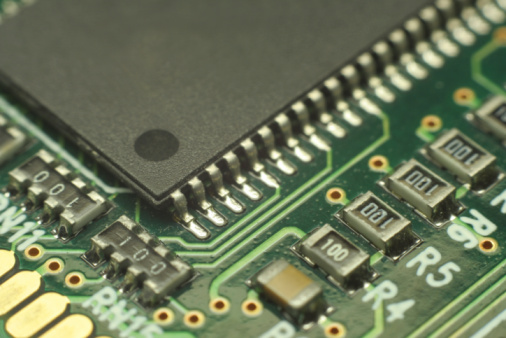Technology
Can Intel Foundry Growth Offset PC Weakness and Evolution to Mobility?
Published:
A news announcement earlier this week has gone largely unnoticed, even though it might be a game-changer for Intel Corp. (NASDAQ: INTC) now that the computing world for processors is changing so much toward smartphones, tablets and other devices. Altera Corp. (NASDAQ: ALTR) confirmed that future manufacturing of Altera FPGAs would be on Intel’s 14 nanometer tri-gate transistor technology.
Intel’s foundry business does not disclose all of its partners and clients, but the clients that have been named to date have been very small. They are Achronixm Netronome and Tabula. Adding Altera to the list is a big win, and it can ultimately help Intel lead to other larger companies as well.
It is not as important that their next-generation products will target ultra-high-performance systems for military, wireline communications, cloud networking and computing and storage applications. What matters here is that chip and programmable logic companies may be able to get the best of both worlds by utilizing Intel’s manufacturing prowess while saving on their capital and manufacturing expenses.
What can come from this is a faster move to silicon convergence, integration efforts and economically flexible alternatives. Intel’s greatest advantage over other traditional processor makers has been that it has been its own manufacturer for the most part. If outside companies are going to take advantage of this, it represents a new business model and means that Intel will not have to lighten up on its deep technology workforce ahead.
The move may not get Intel any farther along in the race to win processor orders for smartphones and tablets, where it is still trying to gain a foothold. That being said, it may make up at least a part of what has been an eroding business loss from the PC side of the business.
The processor business totally dominates Advanced Micro Devices Inc. (NYSE: AMD). AMD has even moved to a fab-lite model. The mobility side of the competitive equation is the ongoing challenge from Qualcomm Inc. (NASDAQ: QCOM) and from ARM Holdings PLC (NASDAQ: ARMH). Both of those companies are beating Intel, and other entrants want a piece of that space too.
Intel’s shares remain stuck around the $20 mark. After a 2.6% gain to $27.76 today, its 52-week range is $19.23 to $29.27. The long and short of the matter is that Intel remains very pressured, and new markets may be the only way that Intel can find real growth. Sales in PCs remain under pressure by almost all reports, and analysts only expect sales growth of almost 2% in 2013 and almost 5% in 2014. For Intel’s sales growth to resume, it will require more processor sales on the mobility side of the operations or on the foundry side of the equation. Intel is at least proving that the latter case is possible.
Thank you for reading! Have some feedback for us?
Contact the 24/7 Wall St. editorial team.